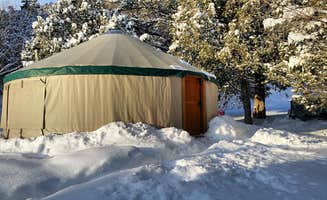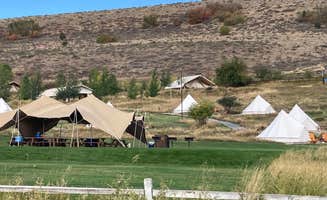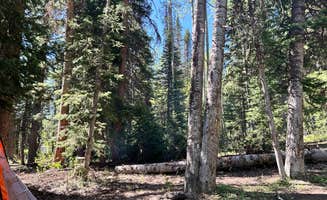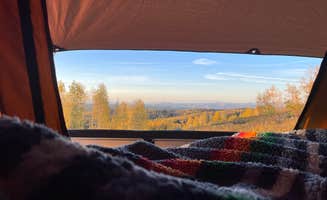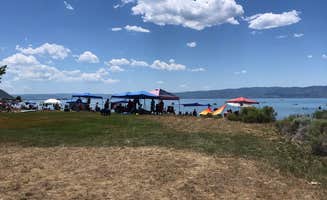Tent campsites near North Logan, Utah offer access to multiple canyons within the Wasatch-Cache National Forest at elevations ranging from 5,000 to 9,000 feet. Campers face significant temperature fluctuations between daytime and nighttime, with summer evening temperatures often dropping 30+ degrees from daytime highs. Several unpaved forest roads throughout the area become impassable after rain or snow events, restricting access to many camping locations.
What to do
Hiking accessibility: Most dispersed camping areas connect to multiple trail systems. At Dispersed camping near Monte Cristo, visitors appreciate the "amazing views and the road up ain't bad at all." The area offers numerous hiking options with changing elevation and terrain types.
Creek exploration: Many sites provide stream access for cooling off in summer months. Near Smithfield Dispersed Campsite, campers enjoy "a very pretty canyon with a creek running through it." The creek beds in this region are typically rocky with clear water suitable for filtering.
Seasonal activities: Fall camping brings spectacular foliage viewing. One camper at Monte Cristo noted: "It was the end of September and all the leaves were changing. We could not have asked for a more perfect spot. The views were immaculate."
What campers like
Privacy between sites: Unlike established campgrounds, dispersed areas offer more separation between campers. A visitor to Curtis Creek / Arbs Basin noted it's "very quiet, barely any people" and "there's man made firepits made out of rocks of people who have stayed here."
Wildlife observation: The mountain areas provide opportunities to see deer, elk, and various bird species. One camper at Curtis Creek mentioned: "Awesome time love the dirt road love the trees the nature, everything about it basically the hills and country."
Campfire locations: Most sites feature established fire rings, though regulations change seasonally. At Cache National Forest Bridger Campground, campers appreciate the "great and spacious area" with "lots of hiking spots!" Note that fire restrictions apply during dry months.
What you should know
Site limitations: Many areas have restricted space for vehicles and tents. At Smithfield Dispersed Campsite, one reviewer warned: "No warning that the road narrows with no turn around about a mile into the campground, or the trees are overgrown which scratched up my sides."
Weekend crowding: Popular dispersed sites fill quickly during summer weekends. A camper at Dispersed camping near Monte Cristo advised: "There are tons of free site all up and down the main road. The only problem is it is busy if you leave on Friday plan to get there by 3 at the latest. Spots fill quick."
Winter access: Most forest roads remain unplowed during winter months. While some areas become inaccessible, others transform into snowshoe and cross-country ski destinations. Higher elevation sites typically remain snow-covered until late May or early June.
Tips for camping with families
Gradual hiking options: Multiple short trails suitable for children branch from most camping areas. The terrain varies from flat creek-side paths to moderate inclines on established forest trails.
Safety precautions: The rapid temperature drops common to the area require extra clothing layers, even in summer months. Cell service is extremely limited in canyon areas - one camper at Curtis Creek noted "there's no cell service" throughout the camping area.
Water activities: For families seeking water recreation beyond creek wading, Bear Lake State Park Campground provides a safer alternative with "fine sand and the water depth is super gradual - it'll take 50-60 yards to get waist deep. Crystal clear water."
Tips from RVers
Size restrictions: Most dispersed sites near North Logan accommodate smaller trailers and RVs only. One reviewer at Smithfield noted: "No spaces large enough for my 23 ft RV were occupied, and all of the car-sized spots were also taken."
Road conditions: Forest service roads deteriorate after rain, creating challenging driving conditions. A camper at Monte Cristo described: "About 1/4 mile down a dirt road from Hwy 39 is a good single boondocking spot with a great view. Not for large RVs. Our 17 ft trailer with 4x4 was tricky to get into the spot because the loop was so small."
Leveling challenges: Most natural sites require significant leveling. Bringing leveling blocks and having stabilizers is essential for comfort in these primitive camping areas.


